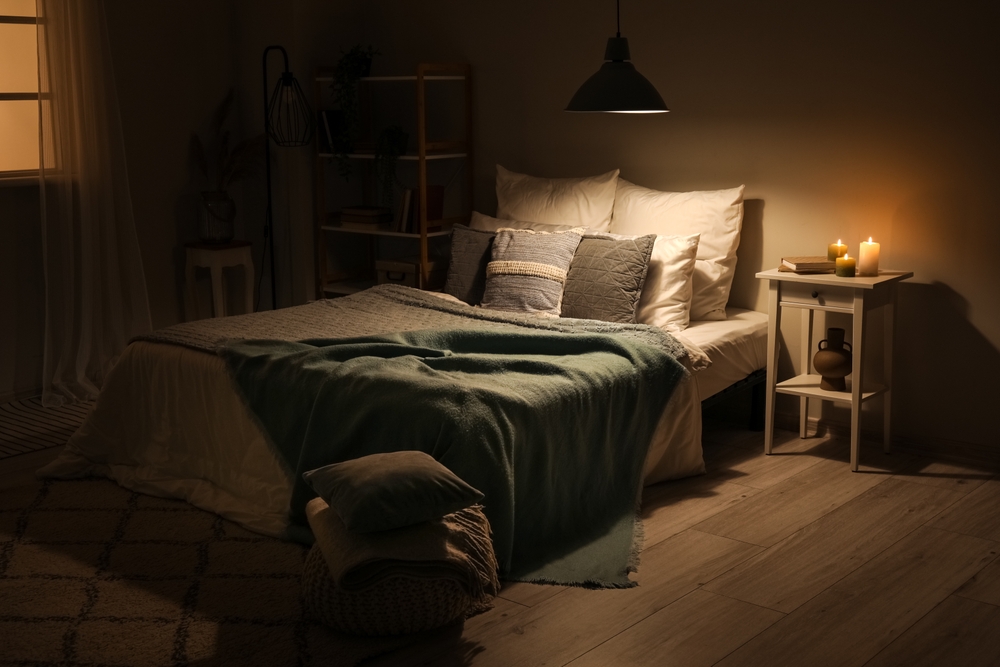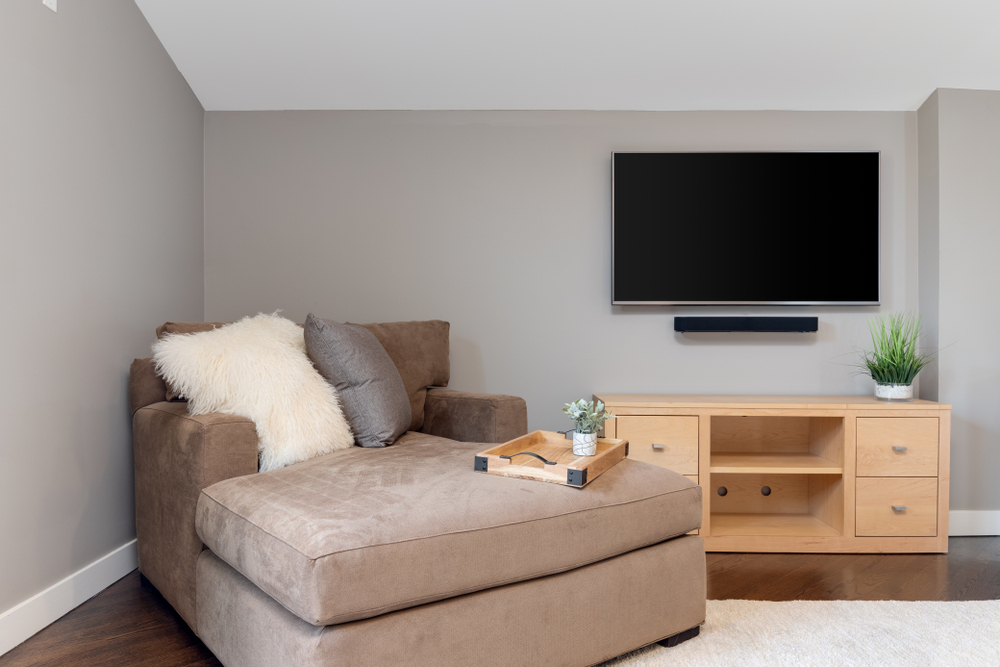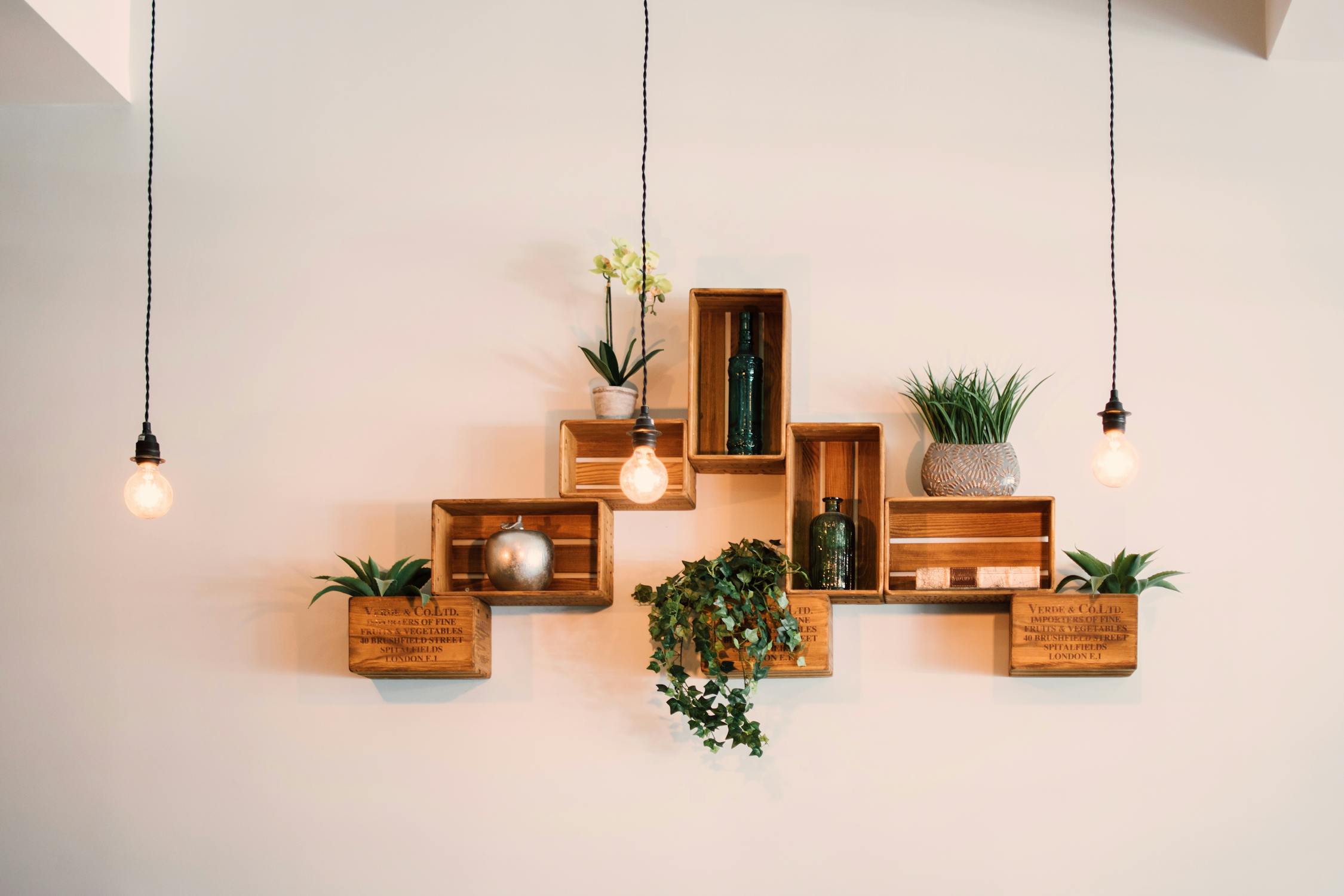Arranging furniture might seem simple, but small mistakes can make a space feel cluttered, unbalanced, or awkward to navigate. If a room feels “off,” but you can’t quite put your finger on why, chances are the furniture layout needs some tweaking. A well-arranged room should feel inviting, functional, and easy to move through—not like a puzzle you have to solve every time you walk in. Luckily, most common furniture mistakes are easy to fix with a few thoughtful adjustments. Whether your living space feels cramped, your bedroom lacks flow, or your dining area isn’t as cozy as it could be, these practical solutions will help transform your home into a more comfortable and stylish retreat.
Mistake #1: Pushing All Furniture Against the Walls

It’s a common belief that placing furniture against the walls makes a room feel bigger, but it actually has the opposite effect. When everything is pushed to the edges, the center of the room can feel empty and uninviting, making the space seem disconnected. This layout also creates too much distance between seating areas, making conversations feel less natural. Additionally, a lack of layering in a room can make it feel flat and uninspired as if the furniture isn’t engaging with the space. Rooms with wall-hugging furniture often lack a sense of intimacy and warmth, which are key to making a space feel cozy and well-balanced.
Read More: 14 of The Best Cleaning Products To Keep Your Home Polished and Spotless
The Fix: Bring Furniture Closer Together

Instead of pushing everything against the walls, try floating furniture toward the center of the room. Arrange sofas and chairs in a way that encourages conversation, using a coffee table or an area rug as a focal point to tie everything together. Even pulling pieces just a few inches away from the walls can make a huge difference in how the space feels. If you have a large room, consider creating multiple seating zones rather than leaving one big open area. Thoughtful furniture placement makes a space feel more inviting, functional, and visually appealing.
Mistake #2: Ignoring Traffic Flow

A beautiful room doesn’t work if you’re constantly bumping into furniture or taking a roundabout route just to get across it. Poor traffic flow makes a space feel cluttered and inconvenient, no matter how well-decorated it is. If guests are unsure where to walk, or if you find yourself squeezing between pieces, your layout is likely disrupting natural movement. In high-traffic areas, furniture that obstructs pathways can create an unnecessary sense of chaos and frustration. When a layout lacks proper flow, the entire room can feel less functional and even smaller than it actually is.
The Fix: Keep Pathways Clear

Make sure there is a clear, natural path through the room by allowing at least 2 to 3 feet of space for movement. Arrange furniture so that people can walk through without dodging obstacles or feeling cramped. In open-concept spaces, use rugs, lighting, or strategically placed furniture to subtly define pathways. If a piece of furniture feels like it’s always in the way, consider repositioning it or swapping it for something smaller. A well-thought-out layout makes a space feel more open, comfortable, and easy to navigate.
Mistake #3: Choosing the Wrong Rug Size

Rugs are one of the most impactful design elements in a room, but when they’re too small, they can make the entire space feel off-balance. A tiny rug that barely extends past the coffee table makes a living area feel disconnected, while an oversized rug can overwhelm the room. The wrong size can also make furniture placement look awkward, with pieces appearing to “float” rather than feeling grounded. Since rugs help define a space, getting the size wrong can throw off the entire room’s proportions. Even the most beautifully decorated room can feel unfinished if the rug isn’t scaled correctly.
The Fix: Scale Your Rug to the Room

In a living room, choose a rug that’s large enough for at least the front legs of all seating to rest on it, creating a cohesive arrangement. In dining areas, the rug should extend at least 24 inches beyond the table to ensure chairs stay on it when pulled out. For bedrooms, a rug should either fit completely under the bed or extend a few feet beyond the sides for a balanced look. If you’re unsure, bigger is usually better—a properly sized rug helps tie a room together and makes it feel more polished. The right rug not only enhances the aesthetic but also adds warmth and comfort underfoot.
Mistake #4: Blocking Windows and Natural Light

A dark, dimly lit room can feel smaller and less inviting, and furniture placement is often the culprit. Placing large pieces like sofas, beds, or shelving units in front of windows can unintentionally block sunlight and make the space feel closed in. A lack of natural light can make even a well-designed room feel dull and unwelcoming. Poor lighting also affects the overall mood of the space, making it less enjoyable to spend time in. Since natural light is one of the best ways to make a room feel airy and open, obstructing it can make a room feel unbalanced.
Read More: Declutter Your Space: 26 Items to Toss from Your Bedroom and Bathroom
The Fix: Let the Light In

Rearrange furniture to maximize the amount of natural light coming into the room. If placing furniture in front of a window is unavoidable, choose lower-profile pieces that allow light to filter through. Sheer curtains instead of heavy drapes help maintain privacy while still letting in brightness. Mirrors can be strategically placed to reflect light and distribute it more evenly throughout the space. Prioritizing natural light makes a room feel more spacious, lively, and inviting.
Mistake #5: Using Oversized Furniture in a Small Room

Big furniture might be comfortable, but in a small space, it can quickly become overwhelming. A massive sectional, an oversized bed, or bulky cabinets can make a room feel cramped and difficult to navigate. When furniture is too large, it also limits the flexibility of the layout, making it harder to arrange the space in a functional way. A room packed with oversized pieces can feel visually heavy, reducing the sense of openness. Scale plays a huge role in how balanced a space feels, and mismatched proportions can make even a well-decorated room feel awkward.
The Fix: Choose Proportional Furniture

Opt for furniture that fits the scale of the room rather than overpowering it. In small spaces, consider multifunctional pieces like storage ottomans, nesting tables, or compact seating. Choosing furniture with exposed legs rather than solid bases can also create the illusion of more space. When every piece is thoughtfully sized and placed, the room will feel more open and functional. The key is to find a balance between comfort and proportion—your furniture should work with the space, not against it.
Mistake #6: Neglecting Vertical Space

Many people focus solely on floor space when arranging a room, but ignoring vertical space can make a room feel underutilized. When everything is placed at the same height, the space can feel flat and one-dimensional. Empty walls can make a room feel unfinished, while cluttered floors can create a sense of chaos. Not taking advantage of vertical space means missing out on valuable storage and design opportunities. A lack of height variation in a room can make it feel visually unbalanced and less dynamic.
The Fix: Use Your Walls

Incorporate tall bookcases, floating shelves, or vertical artwork to draw the eye upward and make the room feel more expansive. Hanging curtains higher than the window frame can create the illusion of taller ceilings. Consider wall-mounted lighting or shelving to free up floor space while still adding personality and function. A mix of vertical and horizontal elements creates visual interest and helps a room feel more complete.
Mistake #7: Not Considering Functionality

A room that looks great but doesn’t function well isn’t truly successful. If your layout makes it hard to use the space efficiently, it won’t feel comfortable, no matter how stylish it is. A living room without enough seating, a workspace with no organization, or a dining area with awkward chair placement all impact how well the room serves its purpose. A room should feel intuitive and support your daily activities, not just look good in photos.
The Fix: Design for Real Life

Think about how you use the space and arrange furniture accordingly. If you entertain guests often, prioritize seating and conversational groupings. If you work from home, make sure your workspace is comfortable and practical. Multifunctional furniture, smart storage solutions, and thoughtful layouts make a home feel both beautiful and livable. A well-designed space should enhance your lifestyle, making everyday tasks easier and more enjoyable.
Read More: Never Face Your Bed This Way! Bed Positions You Should Avoid at All Costs
Final Thoughts

Fixing furniture arrangement mistakes doesn’t require a complete redesign—just a few thoughtful changes can make a world of difference. Whether it’s improving traffic flow, maximizing natural light, or choosing the right-sized furniture, small tweaks can have a big impact on how a space looks and feels. A well-arranged room should not only be stylish but also functional, comfortable, and easy to navigate. By paying attention to balance, proportion, and practicality, you can transform any room into a space that works effortlessly for your lifestyle. Take a fresh look at your home, experiment with different layouts, and enjoy the process of creating a space that feels truly inviting and well-designed.
Read More: Things Guests May be Secretly Judging in Your Home

